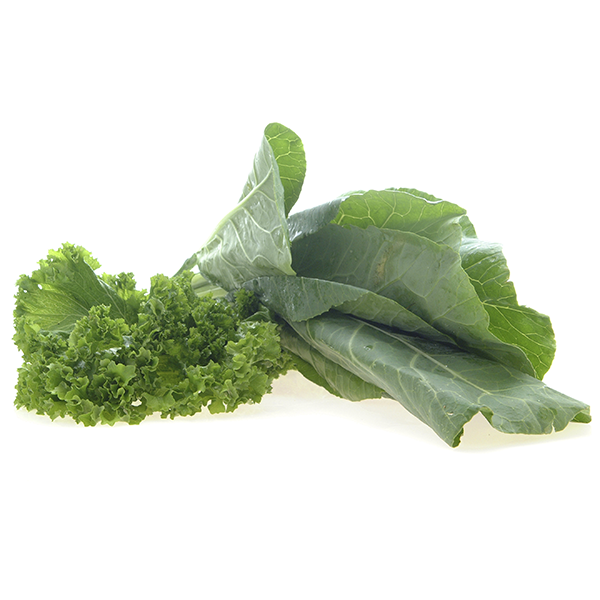
Greens are very popular when it comes to organic sales, capitalize on this by offering a variety of organic greens in your department. Health- and environmentally conscious consumers will seek them out. Note that average retail prices for organic greens are about three times conventional, so be careful with how they’re promoted.
Organic greens can be the centerpiece of a salad promotion for those looking to add some variety to their salad base. Pair organic greens with other organic vegetables in sales and promotions.
The traditional use for greens is to boil them and serve them with vinegar and salt pork. Pair organic greens with these items in promotions to entice consumers who are looking to serve a traditional southern dish.
Smoothies are a popular choice for many health-conscious consumers. Promote organic greens as a way to add nutrition to smoothies as well as a way to help the environment.
Kale is especially popular with smoothie drinkers because of its health benefits.
Include organic collards, mustard greens, Swiss chard and turnip greens on your display. These are some of the more popular and well-known greens.
Consider placing organic greens in the organic section away from conventional greens to avoid the sticker shock of the higher prices. Consumers may tend to think of greens as an economical food, and the price difference between organic greens and conventional greens can be daunting.
Organic greens can be sold in bulk or packaged. Packaged greens tend to make a more attractive display but can be more expensive. Choose the option that works best for your shoppers or consider offering both. Bulk greens can wilt quickly so keep a close eye on the display.
Shipping
Greens are most often sold in 12- and 24-count cartons.
Grades
Collards
U.S. No. 1
Dandelion greens
U.S. No. 1
The standard is applicable to either plants or cut leaves, but not to mixtures of plants and cut leaves.
Mustard greens
U.S. No. 1
The grade applies either to plants or cut leaves but no mixtures of the two.
Swiss chard
Swiss chard is not subject to grading.
Turnip greens
U.S. No. 1
Handling
Temperature: 32 F, 0 C
Relative humidity: 90-95%
Mist: collards and kale
Typical shelf life: 10 to 14 days
Ethylene-sensitive. Do not store or transport with commodities that produce ethylene.
Cracked ice around and in packages may help extend shelf life. Keep at proper humidity levels to prevent wilting. Collard greens should be handled like spinach.
It’s normal for mustard greens to show a slight bronze tint.
When stacking containers in the back room, make sure to stack organic items at the top so residue from conventional produce doesn’t drip down onto the organic items.
Organic items can be stored side by side in the cooler as long as no product is touching and no residue can drip from the conventional onto the organic product.